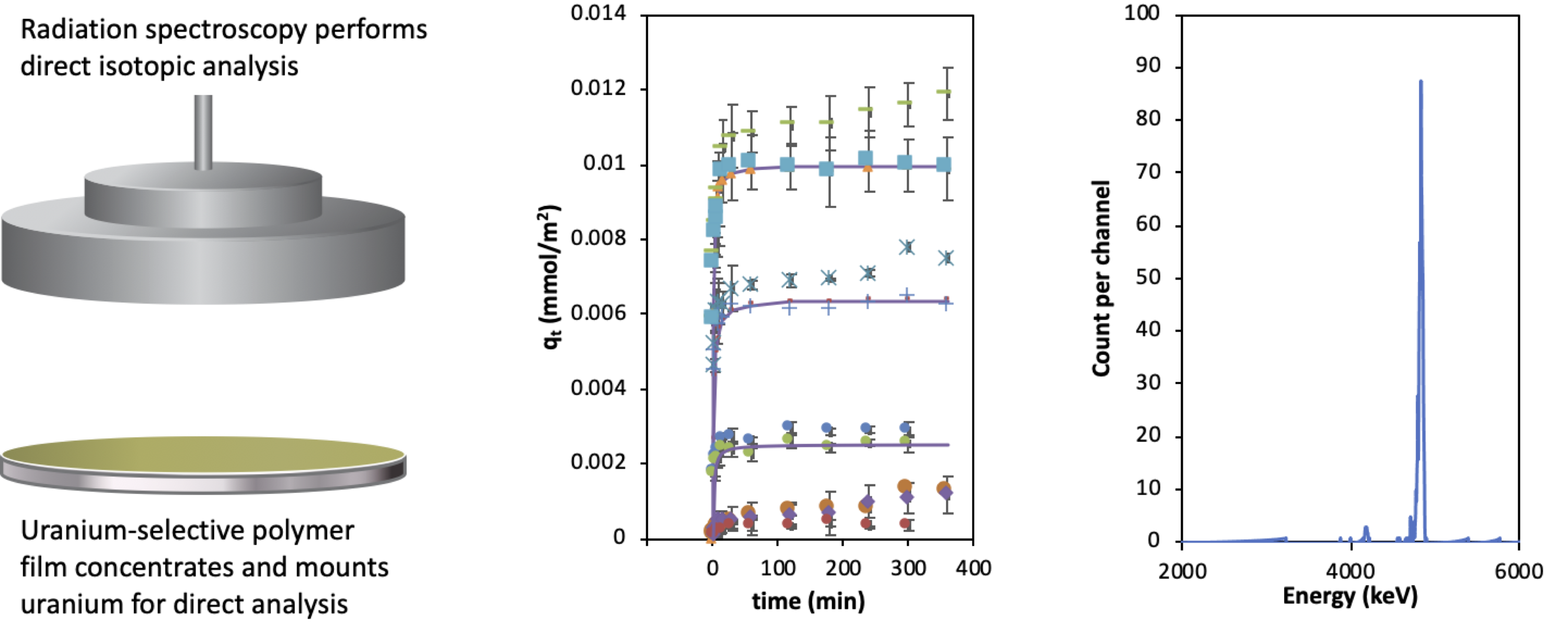2020 Virtual AIChE Annual Meeting
(210e) Rapid Screening Platform for the Isotopic Determination of Radionuclides in Water
Authors
In this presentation, we will discuss findings on the development of a sensor platform based on reactive polymer film coatings for the rapid isotopic screening of waterborne radionuclides. Nanothin coatings were prepared by grafting uranium-selective polymers from polyethersulfone (PES) surfaces via UV-initiated polymerization, and by introducing uranium-selective functional groups to polyacrylonitrile (PAN) surfaces by chemical reaction. Ellipsometry was used to study film growth kinetics on PES films. X-ray photoelectron spectroscopy of modified PAN films revealed conversion of nitrile groups to amidoxime groups to be as high as 40% and showed that the extent and depth of reaction could be varied precisely. Static uptake experiments with solutions of depleted uranium spiked with 233U were conducted to determine uranium binding capacities and kinetics of the modified polymer films at different pH values from 4 to 8. Sorption isotherm data were fitted to the Langmuir model, and the highest sorption capacities were obtained at pH 6 for modified PAN (M-PAN) and PES (M-PES) films. Capacities at pH 4 and 8 were lower and could be explained by differences in sorption mechanisms. Uranium batch uptake kinetics followed a pseudo-second order rate model. Alpha spectroscopy pulse height spectra were analyzed to study the role of selective layer film thickness on peak energy resolution. Excellent resolution with full width at half maximum values from 29 to 41 keV were recorded for M-PAN film and from 26 to 45 keV for M-PES film. Whereas uranium uptake increased with selective layer film thickness and varied with polymer chemistry/extent of modification, the peak energy resolution was independent of layer thickness and polymer chemistry within the experimental measurement uncertainties.
Results from this work were used to modify PES and PAN ultrafiltration membranes with the same experimental conditions to develop uranium selective membranes. High-throughput uptake experiments were performed to study the effect of residence time on detection efficiency and isotopic resolution. This membrane-based detection method enables the rapid, fieldable screening analysis of radionuclides in water for environmental monitoring studies and nuclear forensics investigations.
